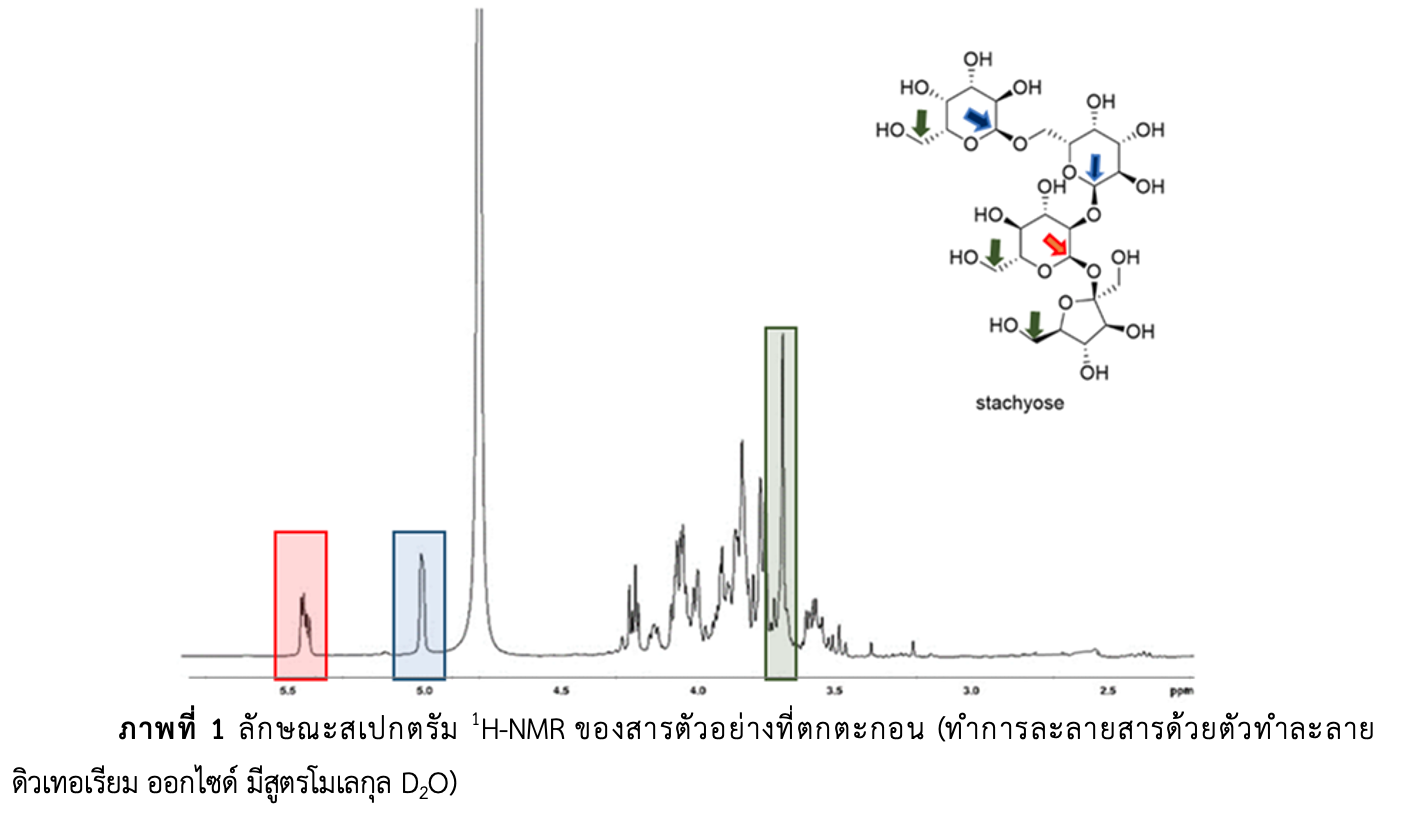การสกัดหาสารสำคัญจากกากถั่วเหลือง เพื่อใช้เป็นส่วนประกอบในเครื่องสำอางและสารบำรุงผิว
Main Article Content
บทคัดย่อ
ถั่วเหลืองมีชื่อทางวิทยาศาสตร์ว่า Glycine max (L.) Merr. อยู่ในวงศ์ถั่ว Fabaceae หรือ Leguminosae โดยถั่วเหลืองจัดเป็นพืชสำคัญทางเศรษฐกิจ ใช้ในอุตสาหกรรมการผลิตนมถั่วเหลืองและการผลิตน้ำมันถั่วเหลือง จากอุตสาหกรรมดังกล่าวจะมีกากถั่วเหลืองเหลือทิ้งจากกระบวนผลิตต่าง ๆ เป็นจำนวนมาก โดยกากถั่วเหลืองที่เหลือจากกระบวนการผลิตจะถูกนำไปเป็นอาหารสัตว์ ในงานวิจัยชิ้นนี้จึงสนใจเกี่ยวกับการสกัดสารสำคัญที่เหลืออยู่ในกากถั่วเหลือจากโรงงานผลิตน้ำมันถั่วเหลืองและนมถั่วเหลือง โดยมีวัตถุประสงค์เพื่อศึกษาการสกัดสารสำคัญจากกากถั่วเหลือง และเพื่อนำไปพัฒนาเป็นส่วนประกอบหนึ่งในผลิตภัณฑ์เครื่องสำอางและสารบำรุงผิว ด้วยวิธีการศึกษาที่ง่ายต่อการนำไปพัฒนา คือ การนำเอากากถั่วเหลืองจากโรงงานผลิตนมถั่วเหลืองและโรงงานผลิตน้ำมันถั่วเหลืองมาทำการสกัดด้วยตัวทำละลาย 70%
เมทานอล (Methanol) ภายใต้อุณภูมิห้อง เป็นเวลา 72 ชั่วโมง หลังจากนั้นทำการกรองและระเหยตัวทำละลายของสารสกัด และทำการตกตะกอนสารสกัดด้วยตัวทำละลายอะซิโตน (Acetone) จากผลการทดลอง พบว่า ปริมาณสารสกัดหยาบที่ได้จากกากถั่วเหลืองจากโรงงานน้ำนมถั่วเหลืองและจากโรงงานน้ำมันนั้น มีน้ำหนักของสารสกัดหยาบเท่ากับ 200 และ 300 กรัม โดยคิดเป็น % yield เท่ากับ 20.0 % และ 25.0% (กรัมต่อกรัมกากถั่วเหลือง) ตามลำดับ และยังพบอีกว่ามีเพียงแค่สารสกัดจากกากถั่วเหลืองของโรงงานผลิตน้ำมันถั่วเหลืองเท่านั้นที่มีการตกตะกอนเกิดขึ้น โดยน้ำหนักสารที่ได้จากขั้นตอนการตกตะกอน เท่ากับ 11.69 กรัม คิดเป็น % yield เท่ากับ 3.4% (กรัมต่อกรัมสารสกัดหยาบ) และเมื่อนำสารที่ตกตะกอนไปทำการวิเคราะห์พบว่า สารที่ได้เป็นสารกลุ่มน้ำตาลสแตคีโอส (Stachyose) จัดอยู่ในกลุ่มเตตราแซ็กคาไรด์ (Tetrasaccharide) เป็นสารกลุ่มประเภทโอลิโกแซ็กคาไรด์ (Oligosaccharide) โดยสารประกอบอินทรีย์ในกลุ่มน้ำตาลมีคุณสมบัติเป็นมอยเจอร์ไรเซอร์กักเก็บความชุ่มชื้นให้ผิวและผลัดเซลล์ผิวเก่า ดังนั้นสารที่ได้จากงานวิจัยในครั้งนี้สามารถพัฒนาและต่อยอดให้เป็นส่วนประกอบหนึ่งในผลิตภัณฑ์เครื่องสำอางและสารบำรุงผิวต่าง ๆ ได้
Article Details

อนุญาตภายใต้เงื่อนไข Creative Commons Attribution-NonCommercial-NoDerivatives 4.0 International License.
วารสารวิทยาศาสตร์และวิทยาศาสตร์ศึกษา (JSSE) เป็นผู้ถือลิสิทธิ์บทความทุกบทความที่เผยแพร่ใน JSSE นี้ ทั้งนี้ ผู้เขียนจะต้องส่งแบบโอนลิขสิทธิ์บทความฉบับที่มีรายมือชื่อของผู้เขียนหลักหรือผู้ที่ได้รับมอบอำนาจแทนผู้เขียนทุกนให้กับ JSSE ก่อนที่บทความจะมีการเผยแพร่ผ่านเว็บไซต์ของวารสาร
แบบโอนลิขสิทธิ์บทความ (Copyright Transfer Form)
ทางวารสาร JSSE ได้กำหนดให้มีการกรอกแบบโอนลิขสิทธิ์บทความให้ครบถ้วนและส่งมายังกองบรรณาธิการในข้อมูลเสริม (supplementary data) พร้อมกับนิพนธ์ต้นฉบับ (manuscript) ที่ส่งมาขอรับการตีพิมพ์ ทั้งนี้ ผู้เขียนหลัก (corresponding authors) หรือผู้รับมอบอำนาจ (ในฐานะตัวแทนของผู้เขียนทุกคน) สามารถดำเนินการโอนลิขสิทธิ์บทความแทนผู้เขียนทั้งหมดได้ ซึ่งสามารถอัพโหลดไฟล์บทความต้นฉบับ (Manuscript) และไฟล์แบบโอนลิขสิทธิ์บทความ (Copyright Transfer Form) ในเมนู “Upload Submission” ดังนี้
1. อัพโหลดไฟล์บทความต้นฉบับ (Manuscript) ในเมนูย่อย Article Component > Article Text
2. อัพโหลดไฟล์แบบโอนลิขสิทธิ์บทความ (Copyright Transfer Form) ในเมนูย่อย Article Component > Other
ดาวน์โหลด ไฟล์แบบโอนลิขสิทธิ์บทความ (Copyright Transfer Form)
เอกสารอ้างอิง
Berhow, M. A., Wagner, E. D., Vaughn, S. F., and Plewa, M. J. (2000). Characterization and antimutagenic activity of soybean saponins. Mutation Research, 448(1), 11-22.
Carvalho, J. M., Oliveira, L. A., Pedrosa, S. S., Pintado, M., and Madureira, R. A. (2021). Potential sugarcane extracts as cosmetic and skincare ingredients, Industrial Crops and Products, 169, 113625.
Chitisankul, T. W. (2018). The utilities and values of okara (in Thai). Food Journal, 48(2), 40-48.
Chitisankul, T. W., (2016). Saponin in soybean for healthy (in Thai). Food Journal, 46(1) 43-46.
Department of Science Service. (2010). Saponins: Production, Extraction, and purification (in Thai). Retrieved 18 June 2021, from OTOP: http://www.sptn.dss.go.th/otopinfo/index.php/en/knowledge/
informationrepack/388-saponins?showall=&start=12
Faizal, A., Geelen, D. (2013). Saponins and their role in biological processes in plants. Phytochemistry Reviews, 12, 877–893.
Jorge, T. F., Florêncio, M. H., Ribeiro-Barros, A. I., and António, C. (2017). Quantifying and structural characterization of raffinose family oligosaccharides porous graphitic carbon electrospray quadrupole ion trap mass spectrometry. International Journal of Mass Spectrometry, 413, 127–134.
Khare, S. K., Jha, K., and Gandhi, A. P. (1995). Citric acid production from Okara (soy-residue) by solid-state fermentation. Bioresource Technology, 54(3), 323–325.
Korpphaiboon, A., Chusri, O., and Tengrang, S. (2017). Development on saponin extraction from rambutan peel and the efficacy test of saponin. Thai Journal of Agricultural Science, 35(1), 60-73.
Li, B., Qiao, M., and Lu, F. (2012). Composition, nutrition, and utilization of Okara (Soybean Residue). Food Reviews International, 28(3), 231-252.
LVMH Recherche. (1997). Cosmetic or dermatological composition containing at least one saponin of the ginsenoside type, and its applications, especially for treating the hair. Meybeck, A. and Bonte, F. Int.Cl. A61K 31/56. US. Pat. 5, 663, 160. 1997-09-02.
Macrae, R., Robinson, R. K., and Sadler, M. J. (1993). Encyclopedia of food science, food technology and nutrition. London: Academic Press.
Misra, V., and Shrivastava, A. K. (2020). Expanding Horizon of Sugar Application: Skin Care and Cosmetics. In: Mohan, N., and Singh, P. (eds), Sugar and sugar derivatives: Changing consumer preferences. Singapore: Springer.
Nizioł-Łukaszewska, Z., and Bujak, T. (2018). Saponins as natural raw materials for increasing the safety of bodywash cosmetic use. Journal of Surfactants and Detergents, 21(6), 767-776.
Ulrich, L. E., Akutsu, H., Doreleijers, F. J., Harano, Y., Ioannidis, E. Y., Lin, J., Livny, M., Mading, S., Maziuk, D., Miller, Z., Nakatani, E., Schulte, F. C., Tolmie, E. D., Wenger, K. R., Yao, H., and Markley, L. J. (2008). BioMagResBank. Nucleic Acids Research, 36(1), 402–408.
Wang, Q., Ge, X., Tian, X., Zhang, Y., Zhang, J., and Zhang, P. (2013). Soy isoflavone: The multipurpose phytochemical (Review). Biomedical Reports, 1(5), 697-701.
Wiley Organic, Inc. (2002). A process for isolating saponins from soybean-derived materials. Bobbins, T. C07H 15/00. WO. WO 02/055529 A2. 2002-07-18.
Xin-Hu, L., Huan-Jun, X., Su-Qin, S., Jian, H., Guo-Yu, L., Yun, Z., Hong-Ying, G., Zhi-Cheng, Z., and Jin-Hui, W. (2012). Analysis and identification of Chinese drugs by three-step infrared spectroscopy—A case study of Danshen. Analytical Methods, 4(10), 3344–3350.
Zeng, Z., Zhang, Y., He, J., Yu, J., Mao, X., Zheng, P., Luo, Y., Luo, J., Huang, Z., Yu, B., and Chen, D. (2021). Effects of soybean raffinose on growth performance, digestibility, humoral immunity and intestinal morphology of growing pigs. Animal Nutrition, 7(2), 393-399.


